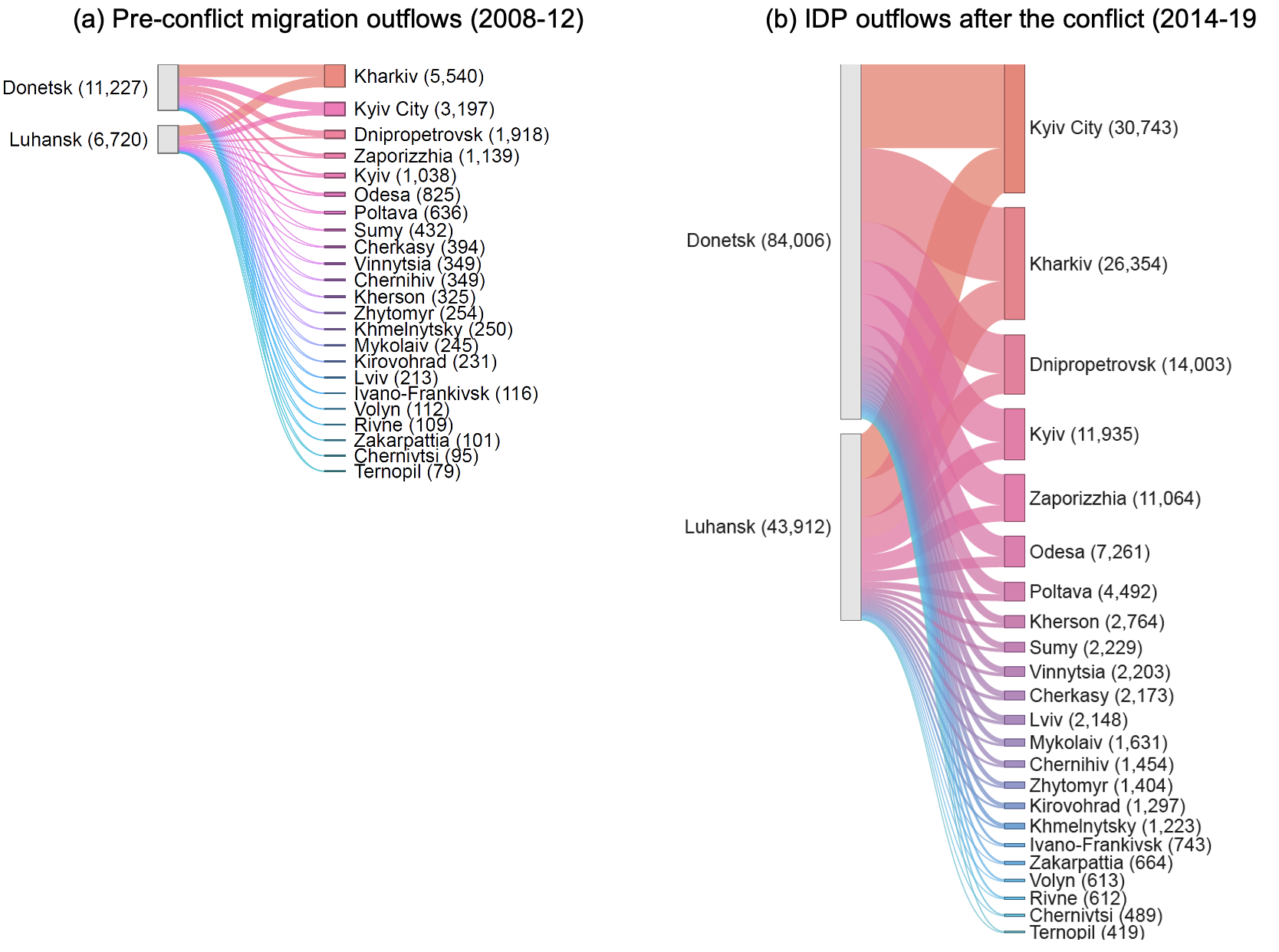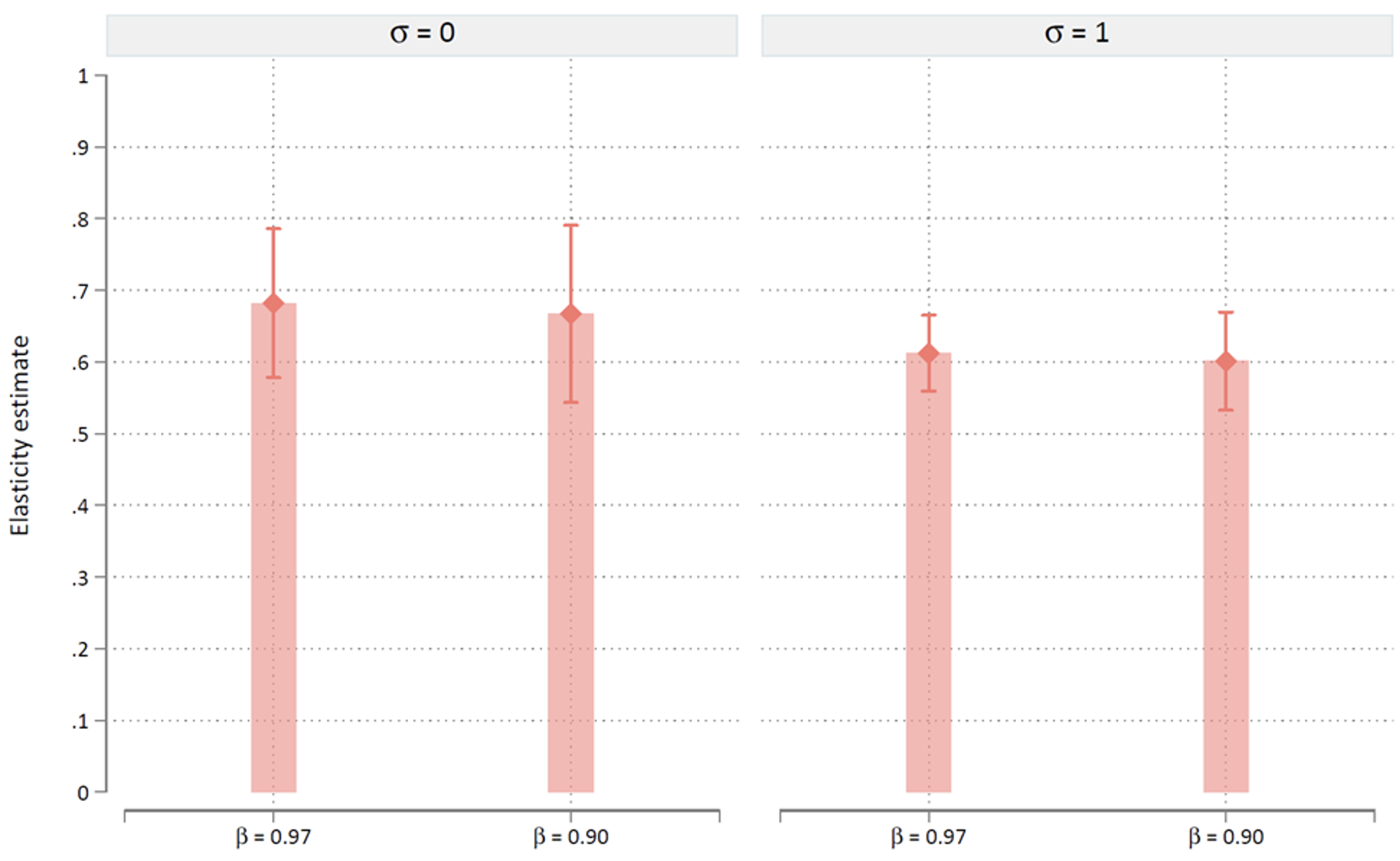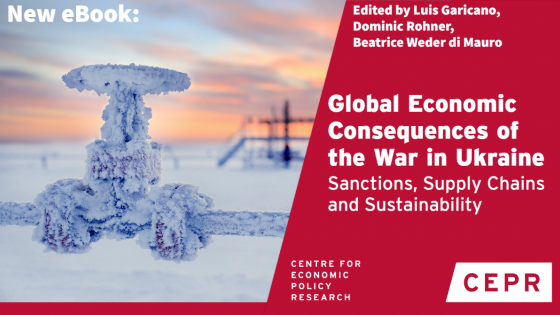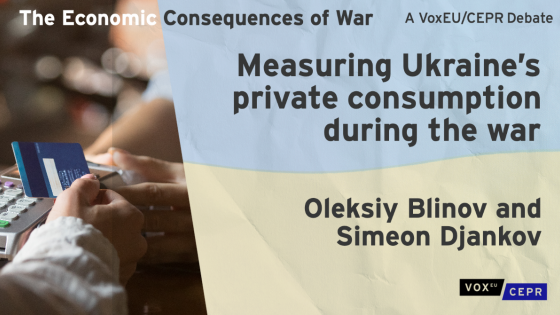Editors' note: This column is part of the Vox debate on the economic consequences of war.
Wars have complex economic and social consequences. Conflict-driven deaths, physical destruction, and economic disorganisation levy unambiguously heavy tolls on societies. However, accounting for the whole burden of wars on human wellbeing is challenging. On the one hand, it is generally difficult to measure the intangible fallout of wars, such as institutional degradation, erosion of social trust, and eruption of psycho-social trauma. On the other, even otherwise measurable factors, including common economic indicators like prices, employment, and trade, may not be recorded accurately in times of conflict, which renders a systematic assessment difficult. With these challenges, economic impact assessments of wars often reflect only a subset of the broad and persistent misery engendered by large-scale human violence.
A new approach to estimating the economic impact of war
In economics, mobility of people is often characterised as a discrete choice problem, where agents choose a location to migrate to, or remain, from a set of potential destinations. Hotz and Miller (1993) showed that there is a mapping from choice patterns to agents’ utility. There is a very simple intuition behind this mapping: if agents are more likely to choose an option, it is because choosing that option gives them more net utility compared to other choices. A similar approach was previously used by Artuc et al. (2010) for estimating the welfare generated by mobility using labour flows and by Arkolakis et al. (2012) for calculating income gains from trade using trade flows.
To better account for the complex welfare impacts of wars in data-constrained environments, in a recent paper (Artuc et al. 2022), we propose an alternative approach based on a mapping from migration choices to welfare, following the intuition of Hotz and Miller (1993). This approach relies on a general and flexible model, where agents choose among a finite number of destinations. The theoretical framework preserves generality in multiple ways. For example, it remains agnostic about the components of location-specific utility (e.g. wages, local amenities, and others), it does not rely on a specific formulation of expectation formation (such as perfect foresight versus stochastic outcomes), and it can be implemented with different time preference and risk aversion assumptions (e.g. myopic versus forward-looking with a time discount, or risk-averse versus risk-neutral). In contrast to the previous applications, this method requires only partially observed outflow data as opposed to stayer data, as the latter may not be observed during an active conflict.
The model is estimated using gross bilateral migration patterns before the onset of the conflict. This helps first to establish how economic agents regard spatial welfare differentials by voting with their feet. Next, we use the estimated model to infer the magnitude of the conflict-driven welfare shock from partially observed migration patterns after the onset of the conflict. Thus, an increase in migration outflows to a subset of possible destinations, together with the estimated responsiveness of agents to welfare differentials across regions, yield a measure of how agents perceive conflict-driven welfare shock.
Application to the conflict in Donbas, 2014-2019 (not 2022!)
The conflict in the eastern territories of Ukraine began in 2014 and remained regionally contained throughout our analysis. About 38% of the combined territories of Donetsk and Luhansk oblasts (less than 4% of total Ukrainian land) remained outside the Ukrainian government’s control, which was demarcated by a 457 kilometre line of contact. Despite the hostilities, migration was not prohibited and remained feasible for Ukrainians. They routinely crossed the contact line for family visits, shopping, and to use ATMs to withdraw pensions (World Bank 2021). About 1.4 million internally displaced people (IDPs) were registered officially in this period. While half of the IDPs remained in Donbas, the other half moved elsewhere in Ukraine. Interestingly, the post-conflict migration outflow exhibited a pattern similar to the pre-conflict migration outflows (Figure 1).
Figure 1 Migration outflows and forced displacement from Donbas, annual averages
Notes: Panel a shows gross migration outflows from Donetsk and Luhansk oblasts between 2008 and 2012 by destination, with average annual numbers in parentheses. Panel b does the same by using annualized official internal displacement numbers (IDPs) between 2014 and 2019. Source: Artuc et al. (2022).
The empirical analysis for inter-regional migration before 2014 yields a migration elasticity parameter between 0.46 and 0.68 depending on the agents’ risk aversion and time preferences (Figure 2). These are comparable with the estimates in the literature (Kennan and Walker, 2011 find approximately 0.5 for the United States). Using these estimates, and following an inversion equation as discussed above, we then map moving probabilities onto welfare, and compute the welfare shocks implied by the post-conflict migration outflows from Eastern Ukraine.
Figure 2 Estimates for migration elasticity parameter
Notes: IV regression results. Error bars show 95% confidence intervals. σ denotes the degree of relative risk aversion in a CRRA utility, and β is the time discount factor.
Source: Artuc et al. (2022).
Finally, following the literature (e.g. Onder et al. 2019), we compute the equivalent income losses implied by these negative welfare shocks. Specifically, we answer the following question: What would be the rate an income loss amortised over ten years that makes an average individual equally worse off as the conflict? Our lower-bound estimates for Donetsk oblast show an equivalent income loss for ten years of between 27.72% and 38.06%, depending on agents’ time preferences, vis-a-vis the average pre-conflict income when agents are risk neutral. This range is equivalent to an income loss of between 30.93% and 39.74% when agents are risk averse with a constant relative risk-aversion parameter equal to one. The magnitude of welfare loss is similar for the Luhansk oblast, equivalent to between 28.04% and 38.50% when agents are risk neutral, and between 28.18% and 36.43% when agents are risk averse.
To test for robustness, we repeat the analysis using different subsets of possible destinations and ensure that our results are not driven by increased attractiveness of a particular destination. For example, we exclude oblasts on the western border and those with large airports, use only neighbours of Donbas, use only use the ten smallest oblasts, and finally use only the ten largest oblasts. These tests suggest that a sharp decline in the utility in Donbas was the main factor behind a sudden but balanced increase in mobility to non-conflict regions within Ukraine (as seen in Figure 1), rather than destination-specific positive shocks or an unbalanced decline in moving costs.
Synopsis
The new approach highlighted in this column has several desirable properties. First, it relies on the revealed preferences of economic agents to account for what matters in assessing the welfare impact of wars. A preference-based welfare concept better captures the intangible consequences of wars (e.g. cultural effects or trauma from physical and sexual violence) as it covers both pecuniary and non-pecuniary factors affecting individual wellbeing. Second, because we abstain from specifying the composition of welfare – thus largely delegating the model selection problem to economic agents themselves – data constraints are significantly relaxed. Our approach only relies on migration away from conflict, which is typically well-recorded by humanitarian organisations for coordinating assistance, and only from a subset of potential migration destinations, not all of them. Overall, the ability to ease a pervasive model-selection problem and circumvent potentially prohibitive data constraints help to achieve a more complete inference about the welfare impact of wars.
It is also important to note that these estimates are driven by the (ex-ante) perceived welfare shocks by economic agents, which trigger migration decisions, and they should be interpreted as the lower bounds of the welfare impact. When conflicts reduce welfare in non-conflict areas significantly or boost mortality drastically, the actual impact can be larger.
References
Artuc, E, S Chaudhuri and J McLaren (2010), “Trade shocks and labor adjustment: A structural empirical approach,” American Economic Review 100(3): 1008–45.
Artuc, E, N Gomez Parra and H Onder (2022), “The True Cost of War,” World Bank Policy Research Working Paper No. WPS 10217.
Arkolakis, C, A Costinot and A Rodriguez-Clare (2012), “New trade models, same old gains?,” American Economic Review 102(1): 94–130.
Hotz, V J and R A Miller (1993), “Conditional choice probabilities and the estimation of dynamic models,” The Review of Economic Studies 60(3): 497–529
Kennan, J and J R Walker (2011), “The effect of expected income on individual migration decisions,” Econometrica 79(1): 211–251.
Onder, H, P Pestieau and G Ponthière (2019), “Equivalent income versus equivalent lifetime: Does the metric matter?”, mimeo.
World Bank (2021), The economics of winning hearts and minds: Programming recovery in Eastern Ukraine, technical report.








